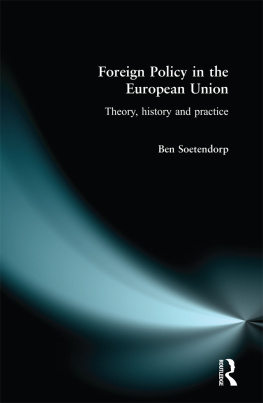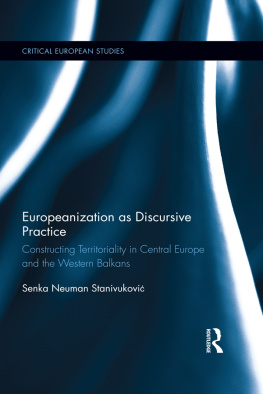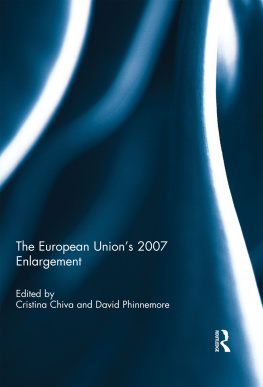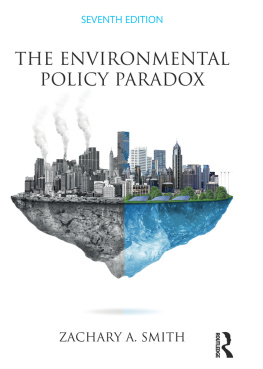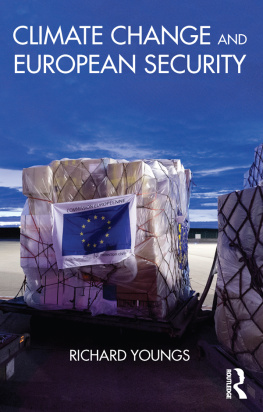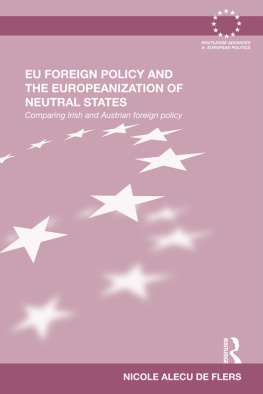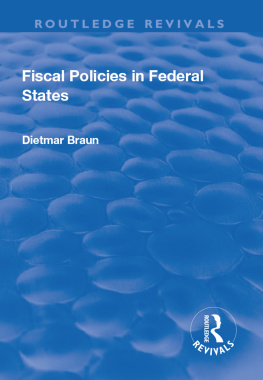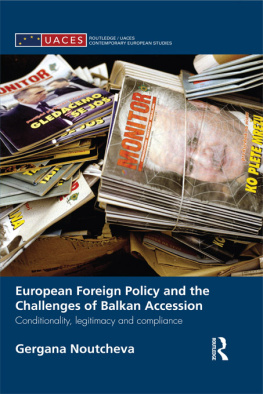EUROPEANIZATION OF ENVIRONMENTAL POLICY IN THE NEW EUROPE
A major contribution to the literature on the limits of Europeanization and state socialization after the Eastern enlargement of the European Union. In mastering the various facets of environmental policy in Central Europe, Braun shows us how relevant this policy field is for the study of the differentiated understanding of EU norms and values by the EU member states.
Elsa Tulmets, CERI / Sciences Po, Paris, France
The European Union has often been considered to be a global environmental champion promoting the diffusion of norms such as ecological modernization, sustainable development or the precautionary principle. But the accession of the ten Eastern European states has increased heterogeneity within the EU, making common agreements on shared norms ever more difficult. Based on impeccable methodological underpinnings that connect the EUs ability to norm diffusion and domestic contexts, Mats Brauns book is the first one to show how the new member states are successfully socialized into EU decision-making and the problems that remain. This will be a crucial reading both for scholars and practitioners interested in the transformative power of Europe, its impact on Central and European Member states, and the future of the EUs green agenda.
Aron Buzogny, University of Munich, Germany
to Markta and the boys
Europeanization of Environmental Policy in the New Europe
Beyond Conditionality
MATS BRAUN
Institute of International Relations, Czech Republic
First published 2014 by Ashgate Publishing
Published 2016 by Routledge
2 Park Square, Milton Park, Abingdon, Oxon OX14 4RN
711 Third Avenue, New York, NY 10017, USA
Routledge is an imprint of the Taylor & Francis Group, an informa business
Copyright 2014 Mats Braun.
Mats Braun has asserted his right under the Copyright, Designs and Patents Act, 1988, to be identified as the author of this work.
All rights reserved. No part of this book may be reprinted or reproduced or utilised in any form or by any electronic, mechanical, or other means, now known or hereafter invented, including photocopying and recording, or in any information storage or retrieval system, without permission in writing from the publishers.
Notice:
Product or corporate names may be trademarks or registered trademarks, and are used only for identification and explanation without intent to infringe.
British Library Cataloguing in Publication Data
A catalogue record for this book is available from the British Library
The Library of Congress has cataloged the printed edition as follows:
Braun, Mats.
Europeanization of environmental policy in the new europe : beyond conditionality / by
Mats Braun.
pages cm
Includes bibliographical references and index.
1. Environmental policyEuropean Union countriesCase studies. 2. Environmentalprotection
European Union countriesCase studies. 3. Post-communismEuropean Union countries
Case studies. 4. European Union countriesPolitics and governmentCase studies. I. Title.
GE190.E85B73 2014
333.7094dc23
2013043681
ISBN 978-1-409-43294-4 (hbk)
Contents
Preface
Prior to the enlargement of the European Union to Central and Eastern Europe in 2004/2007 it was easy to find sceptical voices both within the part of the academic community that is interested in EU environmental policy, and among politicians and senior civil servants from the old EU member states. The sceptics thought that enlargement would mean the end of progressive EU environmental policy for a substantial period of time. There were some reasons to expect that this would be the case. It was expected that after the enlargement in 2007, the new member states from Central and Eastern Europe would be able to form a blocking minority in the Council when qualitative majority voting would be applied, and qualitative majority voting is most often applied when it comes to environmental policy. Moreover, the newcomers were expected to have other priorities than environmental protection due to their economic situations. The countries also did not have as many strong and well developed environmental non-governmental organizations or other groups that would promote a green agenda as the countries of Western Europe. However, despite the negative expectations, the European Union has continued to develop, by international comparison, its progressive environmental policy even after enlargement. In 2006, for instance, the EUs new chemical policy, the REACH regulation, was in place, and two years later an extensive legislative package on Climate and Energy was rapidly negotiated and agreed to within the EU. Also examples from other fields tend to stress that the EU environmental policy did not come to a standstill after the enlargement.
In this book I approach the question of what then has happened with EU environmental policy after enlargement. Can we already now state that the sceptical voices were wrong? Some might argue that such a conclusion would be rash, since there actually are some indications that the influence of the Central and Eastern European Countries on EU environmental policy is increasing in a negative sense. However, it is much easier to get an overview of how the countries of the region succeed as policy receivers than regarding what impact they actually have on EU policy making in the field. In a way this is not only a problem on the analytical level, where it is much easier to look at transposition data etcetera than to analyse the countries subtle influence on the decision making, but it is also linked to the fact that the new member states public administrations were for a long time structured to handle policy adoption and not policy making. In order to at least provide a tentative answer to the question of how the Central and Eastern European Countries affect EU environmental policy, in the book I look at how the countries approach some of the norms behind EU environmental policy.
When I started writing this book, I chose the subject not only due to my academic interest in how international norms diffuse and my particular interest in Central and Eastern Europe and the European Union. I also was interested in the issue because of the relevance of EU environmental policy for the entire planet. The EU has, in particular during the decade before enlargement, established itself as a global leader in environmental policy. This is particularly the case when it comes to climate mitigation policy. Therefore if the enlargement changes EU environmental policy it also changes the identity of a major player at the global level when it comes to international environmental agreements.
The EU is often portrayed in the academic literature as a normative power. This term as a description of the EU implies that the EU promotes some core norms at the global level and by doing so it tries to change the idea of what is normal in global politics. The countries in Central and Eastern Europe clearly were the targets of the EUs normative power prior to enlargement. This book is about what happened thereafter. Has the EU managed to spread not only its environmental legislation to these countries, but also the norms upon which the EU environmental policy is built?
The question of norm diffusion is not only a question of whether the new member states accept the norms that had been developed within the EU over time and existed previous to their entrance. The question is also about whether the norms are open for reformulation, and whether they have been developed in an inclusive way. In other words the question is whether the norms are really applicable in the Central and Eastern European countries to the same degree as in some of the old member states.




